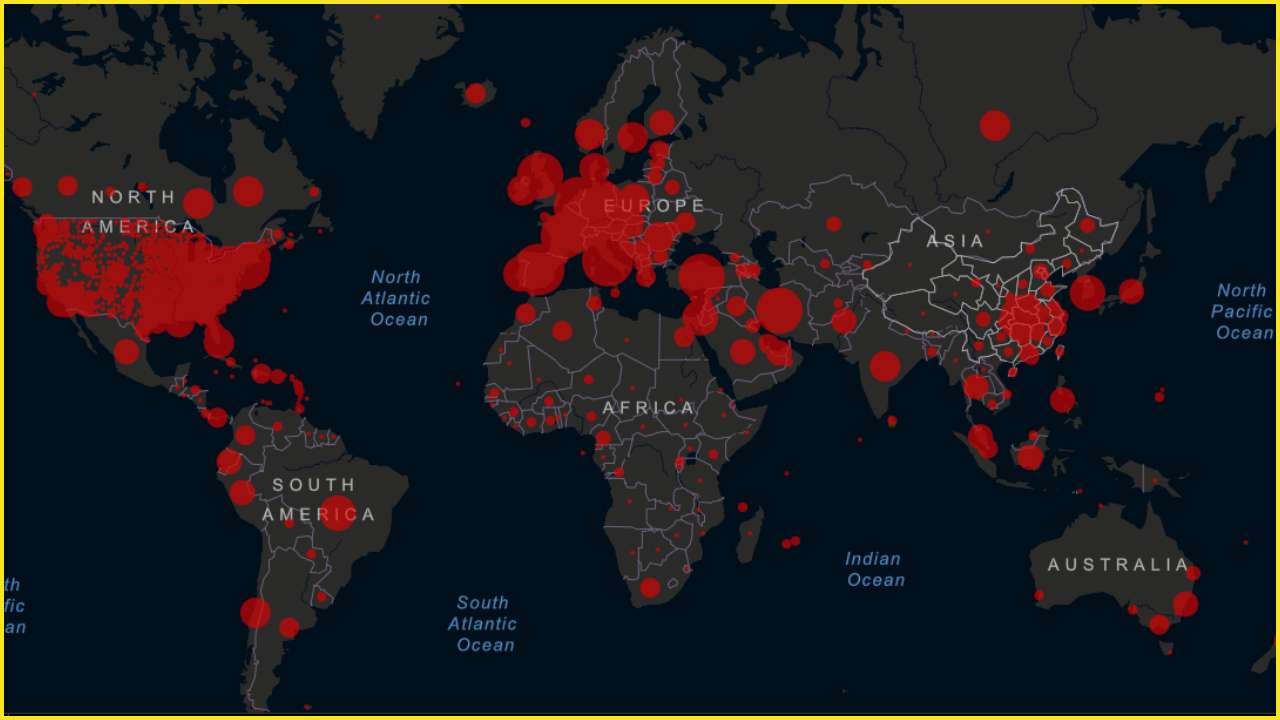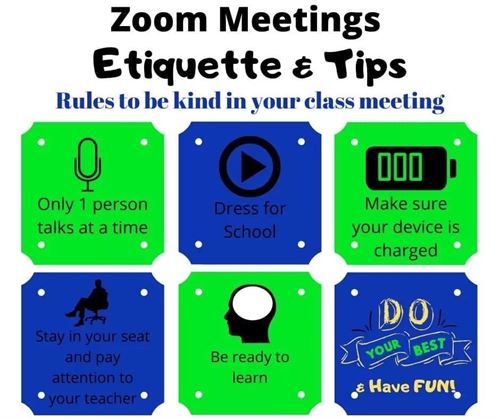





Is your Zoom etiquette lacking? barking dogs and background spouses aren’t cute anymore .......... Don’t be late — if you’re clicking to join the meeting at the exact time your meeting starts, you’re already late. No chewing — a cup of coffee or some water is OK, but don't eat on a video call. Especially crunchy foods. Be present — when you’re multitasking, it’s more obvious than you think. ............ Rule of Thumb: If you're not scheduled to talk, then mute yourself. The mic's on your laptop or smart phone are more sensitive than you think. If you must get up (bathroom, refill coffee, correct a barking dog, etc.), then turn the camera off............... one of our co-workers did his dishes during the meeting, camera on, etc. Took no notes, nothing on mute. It was very frustrating .......... please do not take me with you during your morning walk ........... take a tip from the broadcast world: if you are NEAR a camera or a microphone, always assume it may be on. That means no swearing, no scratching in awkward places, no nose picking, etc. ............. “I forgot I’m sharing my screen” accidents! .......... Try to have your camera at an angle that limits or emoves the possibility of interruptions by other household members. ALWAYS wear pants even if you think that your Zoom-mates can't tell. ........ Some colleagues of mine were on a live video conference when one person on the call — not realizing their camera was on — picked up their laptop and took it, and the whole team, into … the bathroom … where he proceeded to do what one does in there. ............. When in doubt, mirror your audience: for example, when working from home, PJs generally won’t cut it. ................ Rule of Thumb: If you're not scheduled to talk, then mute yourself. The mic's on your laptop or smart phone are more sensitive than you think. If you must get up (bathroom, refill coffee, correct a barking dog, etc.), then turn the camera off. ............ Master the tech: when appearing on video, lighting, camera angle, and audio all matter — in equal measure. ............. The thing I notice is how many people don't make thier beds. ;) As important as dressing as if you are meeting in person your background is also important. Avoid have bright lights behind you. If in a dark area open a blank Word document and turn up the brightness to help illuminate your face. ........... Failure to mute but SPECIFICALLY the failure to mute NOTIFICATIONS, so when you’re discussing things other people’s machines keep pinging and dinging. Very distracting ................. when people are badly backlit, so you can’t actually see them. ......... If you are sitting by a window,FACE the window so it lights your face. ............ We are lucky enough to have a “no apologies” rule. Work has come into your home not the other way around so we ask our people to try not to apologise for your home being your home. .......... Unmute before talking, have the webcam at eye level facing you directly and look at it whilst talking. Don't interrupt, put your virtual hand up.

विदेशबाट फर्किँदा पीसीआर नेगेटिभ भए घर जान पाइन्छ : मन्त्री भट्टराई
नेपालमा चिनियाँ भ्याक्सिनको क्लिनिकल ट्रायललाई स्वीकृति बेलायत र रुसको छलफलमा
It is not what India means to @kamalaharris, it is what Kamala means to the young girls in India.
— Paramendra Kumar Bhagat (@paramendra) August 23, 2020
As business and government leaders attend to the immediate challenges of leading through the pandemic, they also have the opportunity to do more than react to disruptive change. They can shape our new reality. #LeadingInTheNewReality
— Boston Consulting Group (@BCG) August 12, 2020
Donald Trump’s Orwellian jamboree This year’s Republican convention proves the party is post-ideas — the plan is simply the man
As India peaks, Covid-19 spreads rapidly in Nepal Because of the open border, Nepal may not be able to completely control the virus until India does
COVID-19 Is Transmitted Through Aerosols. We Have Enough Evidence, Now It Is Time to Act a substantial share of COVID-19 cases are the result of transmission through aerosols. The evidence in favor of aerosols is stronger than that for any other pathway ......... research eventually proved that tuberculosis can only be transmitted through aerosols. I believe that we have been making a similar mistake for COVID-19. ........ “Aerosol” (sometimes referred to as “airborne”) transmission is similar to droplet transmission, except that the bits of fluid are so small that they can linger in the air for minutes to hours. To understand the scale of aerosols, the diameter of a human hair is about 80 microns, and aerosols smaller than about 50 microns can float in the air long enough to be inhaled. SARS-CoV-2 is only 0.1 microns in diameter, so there is room for plenty of viruses in aerosols. ............. When it comes to COVID-19, the evidence overwhelmingly supports aerosol transmission, and there are no strong arguments against it. For example, contact tracing has found that much COVID-19 transmission occurs in close proximity, but that many people who share the same home with an infected person do not get the disease. To understand why, it is useful to use cigarette or vaping smoke (which is also an aerosol) as an analog. Imagine sharing a home with a smoker: if you stood close to the smoker while talking, you would inhale a great deal of smoke. Replace the smoke with virus-containing aerosols, which behave very similarly, and the impact is similar: the closer you are to someone releasing virus-carrying aerosols, the more likely you are to breathe in larger amounts of virus. We know from detailed, rigorous studies that when individuals talk in close proximity, aerosols dominate transmission and droplets are nearly negligible. ............ Talking, and especially singing and shouting increase aerosol exhalation by factors of 10 and 50, respectively. ............. outbreaks often occur when people gather in crowded, insufficiently ventilated indoor spaces .......... Superspreading events, where one person infects many, occur almost exclusively in indoor locations and are driving the pandemic. These observations are easily explained by aerosols, and are very difficult or impossible to explain by droplets or fomites. ........... Aerosols on the other hand, act like smoke: after being expelled, they don’t fall to the ground, but rather disperse throughout the air, getting diluted by air currents, and being inhaled by others present in the same space. Contact tracing shows that, when it comes to COVID-19, being outdoors is 20 times safer than being indoors, which argues that aerosol transmission is much more important than droplets; outdoors, there’s plenty of air in which aerosols can become diluted; not so indoors............. the CDC says that 15 minutes of close proximity to a COVID-19 infected person often leads to contagion ......... We should continue doing what has already been recommended: wash hands, keep six feet apart, and so on. But that is not enough. A new, consistent and logical set of recommendations must emerge to reduce aerosol transmission. I propose the following: Avoid Crowding, Indoors, low Ventilation, Close proximity, long Duration, Unmasked, Talking/singing/Yelling (“A CIViC DUTY”)........ masks are essential, even when we are able to maintain social distance. We should also pay attention to fitting masks snugly, as they are not just a parapet against ballistic droplets, but also a means to prevent “smoke” from leaking in through gaps. We should not remove masks to talk, nor allow someone who is not wearing a mask to talk to us, because we exhale aerosols 10 times as much when talking compared to breathing. ........... It is important to think about ventilation and air cleaning. ........... Spending as much time as possible outdoors, wearing masks, and reducing density will remain critical no matter how well we ventilate and clean the air.
